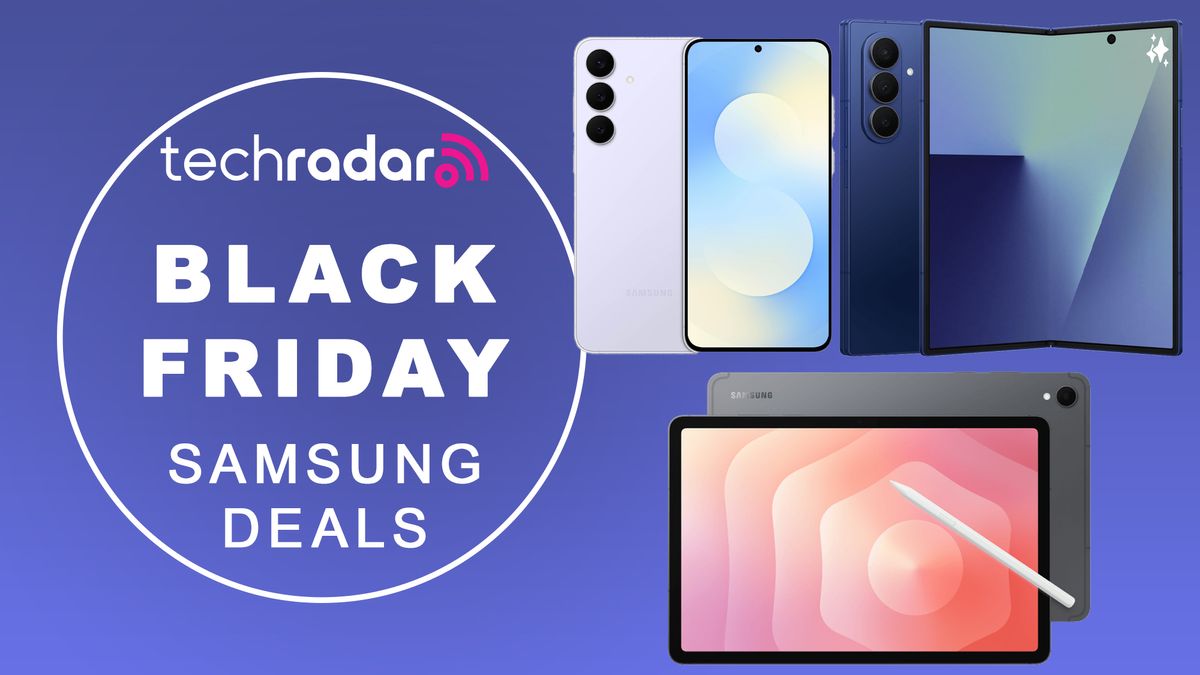
You finally did it. After months or even years of figuring out what your business move should be, you've landed on what might be your best idea yet.
There's only one problem. 😔
You're not a developer, and design isn't really your thing either.
So what now? Do you let your brilliant idea die like all the others that never made it out of your notes app?
Also: AI won't take your job, but this definitely will
Not today, my friend! NOT! TODAY! ✋🛑⛔️
Enter Figma and its partner in crime, or -- in this case -- partner in code, Bolt. Figma handles the design. Bolt turns that design into a functioning app using natural language, bringing new meaning to vibe coding. Together, they help turn your idea into a working product without you writing a single line of code.
via Bolt
In this article, I'll explain Figma, how it works with Bolt, and how the two can help bring your idea to life. I'll also share real use cases and tips to help you get started as soon as today.
If you're new to my work, my name is Lester, but feel free to call me Les. I'm a founder with a successful exit and an award-winning performance marketer.
These days, I'm focused on helping everyday people make sense of all the "AI is changing everything" news. 🤝
If you like data-driven marketing insights and want to stay up to date with practical ways to use AI, check out my free newsletter, No Fluff Just Facts. I break down what's working in marketing and the AI tools worth paying attention to.
But enough about me. Let's talk about how Figma and Bolt work together and how the only thing you need to bring your idea to life is the ability to describe what you want.
What is vibe coding?
Before we dive in, let's review the basics of vibe coding and why it matters for building your software company.
Outside of being a fancy phrase that sounds like something Gen Z would say, it could be the future of coding as we know it.
The term "vibe coding" was introduced in early 2025 by Andrej Karpathy, a well-known Slovak-Canadian computer scientist. Karpathy led artificial intelligence and Autopilot Vision at Tesla. He also co-founded and worked at OpenAI, where he focused on deep learning and computer vision. 💪
Also: What is AI vibe coding? It's all the rage but it's not for everyone - here's why
Karpathy describes vibe coding as more of a conversation with AI. You say what you want, the AI writes the code, and you test and refine it as you go. It's not about knowing programming languages or syntax. It's about guiding the AI with natural language instructions.
It shifts the focus from manually writing code to describing the functionality you want and interacting with the AI to build, test, and improve it. This approach is simple and accessible, even if you don't have a background in coding.
Essentially, you're catching a vibe while coding -- see what I did there? 😏
This way of building makes the process feel more like a conversation than traditional coding.
This shift might be more disruptive than we've seen in creative and artistic areas, where AI still struggles with "taste." Code is binary. It either works or doesn't.
How Figma and Bolt work together
Figma is a web-based application primarily used to create user interface (UI) and user experience (UX) design. It allows users to create stunning designs and online experiences. Its strength is the ability to share and iterate on designs in real-time, making it a great fit for teams building digital products like websites and apps.
This is especially helpful if you and a cofounder work on a venture together and have different responsibilities. 😎
I want you to think of Figma as "Form."
Also: The best AI for coding (including two new top picks - and what not to use)
Bolt is an AI-powered tool that streamlines web development by automating code generation and allowing users to build full-stack applications with minimal coding. It takes user-generated prompts in natural language and creates corresponding code for both the front and back end, including databases and workflows.
Think of Bolt as "Function."
Together, Figma and Bolt bring new meaning to "form meets function." 🥰
Before this integration, you would need a designer to create the look and feel of your application and then hire a developer to bring your idea to life.
Here's the thing: Design and software development are two distinctly different skill sets, and it's hard to find someone who can do both. Even rarer is someone who does both well.
It's like your accountant and lawyer being the same person. While not impossible, it's unlikely, and if we're being honest, it's probably a bad idea. 👎
All that said, here is how the magic happens: When we combine the capabilities of Figma and Bolt, we can create software in a way we haven't before -- stunning designs of software applications with a single prompt.
Here's how the integration works:
You install Bolt directly inside Figma by going to Figma's Plugins section and searching for "Bolt." Once it's installed, you can open it alongside your design.
From there, you click on an element like a button or form and use natural language to tell Bolt what you want it to do.
For example, you can type, "When this button is clicked, go to the next screen," and Bolt builds that logic into your file.
Also: Want better AI images? I tried Midjourney 7 and it blew me away - here's why
It's like having a developer built into your design tool. You need to know what you want the product to do, and Bolt handles the rest using natural language.
So, instead of exporting designs and handing them off to a developer, you stay in flow. You build, test, and interact with a real working version of your app or site right inside the tool you used to design it.
It's design and development in the same space. That's the magic of Figma and Bolt together.
We went from dial-up internet to building software companies by chatting with a machine like you would with a friend in a single lifetime. What a time to be alive. 🥳
What to build with Figma and Bolt
Here's the question I get asked a few times a day: What should I build with AI?
If you've ever wondered the same thing, don't worry, I got you. My explanation will be overly simple, so it opens your mind to the possibilities.
For the most part, no-code tools build web or mobile apps, and in some cases, both. ✍️
Also: How you succeed in business is shifting fast - and not because of AI
When you think web or mobile, that's the location where your users interact with your application. This matters, but not for the reason you might think. For example, if you have a B2B solution, it may be best for your solution to live on the web since your users will likely be using a desktop. On the other hand, if you're building a consumer solution that works with other mobile apps, it may be better suited as a mobile app.
Feel me?
Now, when you think about the app, your solution:
- Does something
- Stores something
- Documents something
- Sells something
Here's what that looks like in practice:
Does something: Think of this as performing an action. This includes tools that connect people, automate tasks, sell products, track progress, schedule meetings, or teach skills. Let's use ChatGPT as an example. It's incredibly impressive what's happening under the hood, but at the end of the day, it's a web app that performs an action.
Stores something: These are tools that save, organize, or manage data. Think notes, files, customer lists, tasks, or inventory. Real-world examples are Notion, Google Drive, and so on.
Documents something: Think ZDNET. At the end of the day, we're documenting tech news.
Sells something: Think Amazon or a marketplace idea. Basically, you're facilitating a transaction.
This is an intentional oversimplification, designed to open your mind to the possibilities of what you can build. 🤓☝️
You see, most online gurus will give you a list of generic things you can build with Figma and Bolt, such as inventory management systems or customer relationship management (CRM) tools. Or worse, they'll say something vague like "AI-powered apps," whatever that means.
But this is one of those times where I want to show you how to fish rather than give you a fish.
The problem you solve can be simple or complex, but at its core, it's doing, storing, documenting, or selling something.
This framework should help get your creative juices flowing.
Here's the key: When deciding what to build, start with who you want to serve. The fancy term for this is your ICP (Ideal Customer Profile).
Also: The most critical job skill you need to thrive in the AI revolution
Ultimately, your business and, by extension, your app is solving a problem for your ICP.
That's your problem. And your app idea? That's the solution. 🔥
At the core, this is what you're doing: solving problems.
As my pop says, see a need, fill a need. Don't overthink it.
My concerns
Ah, yes, the part of the article where I share my concerns.
Figma and Bolt are great, and some of the best in class, but my beef is with the industry as a whole.
No-code tools sell the dream of "building a software company with a single prompt." While that's not a lie, it has unforeseen implications.
If you're building something simple like a blog, security might be less of an issue -- but it is still something you need to take seriously. ⚠️
Also: Million-dollar ideas pop up in your feed every day - here's exactly how to spot them
The problem is that most no-code platforms skip over the security aspect. As someone stepping into the tech game, you have a responsibility to keep your customers' info private and out of the hands of hackers.
Outside of that, while these tools are impressive, they have limits. You shouldn't expect to build the next Instagram using no code alone.
That brings me to scalability. No-code tools aren't the end game. They're best suited for getting your idea off the ground quickly. These tools shine when it comes to prototyping. ✅
My last point isn't so much a concern as a heads-up. These tools are designed for people new to development, but to really get the most out of them, it helps to have some domain knowledge or at least have a pro review your work to clean things up.
I'm not telling you this to discourage you, but I need you to know. This tech is amazing, but there are still a few loose ends you need to tie up.
My two cents
We've unpacked a lot, so here's something to leave with.
The combination of Figma and Bolt is a special one. 🚀
It can help you speed up the process of going from an idea to getting it into the hands of paying customers. And while that's amazing, you still need to consider the problem and who you're solving it for.
No-code tools are great, but notice they didn't say no work.
Also: Google's AI Overviews will decimate your business - here's what you need to do
Whatever you decide to build, you'll need to lean into it. That means growing, learning, and becoming a better version of yourself.
It might be difficult, but it's not impossible.
😇 Hope this helps. I'm rooting for you.
P.S. If you want more easy and helpful AI tips and tricks, sign up for my free newsletter, No Fluff Just Facts.
Get the morning's top stories in your inbox each day with our Tech Today newsletter.

 5 months ago
106
5 months ago
106








 English (US) ·
English (US) ·